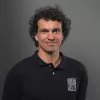At lot of collapse do not happen when going straight on speedbar, but when thermaling or prospecting. That would penalized those people even more, when they didn't even took a particular risk, but got a surprise collapse (and they are always a surprise, unwanted!). This would be unfair.
Pilots fly in their confidence zone. They don't want a collapse! When there is a collapse, it's unexpected and sudden.
We use speedbar and 99.9% of time everything's fine because we use it in our confidence zone.
If it's turbulent, we release speedbar and adapt. Because if we get a collapse, we'll loose altitude and take time to recover direction. In the meantime, other pilots will pass in front. So having a collapse is already a penalty in itself. Giving points penalty on top of that is not helpful.
Your idea of "careful flying" starts on the principle that pilots are "blindly pushing full bar". I think that they are not idiots, but are overall in there confidence zone... because usually no collapse. See: risk homeostasis theory.
So we won't fly slower because they might get a collapse in 0.01% probability.
Pushing your idea further would be to remove speedbars, but that would be way less fun. Also they could be helpful for security in case of wind increase so we need them.
You don't throw rescue because you risk 0 point, but because your life is in danger and you're not in control anymore.
You don't give 0 points because rescue took time to open. Pilots already have way less points than others anyway when task is not finished.
We should encourage people to fly well like the best pilots : without collapse and making use of speedbar appropriately. That will give you more points.
Not the fact of being afraid of losing points.
We should also train pilots how to react in case of collapse (SIV). And maybe that should be mandatory on some comps.














Comments
I see the good intentions behind this idea, but I believe is trying to micromanage a situation that from its nature is the most chaotic in our sport, and some times not a pilot's fault at all....